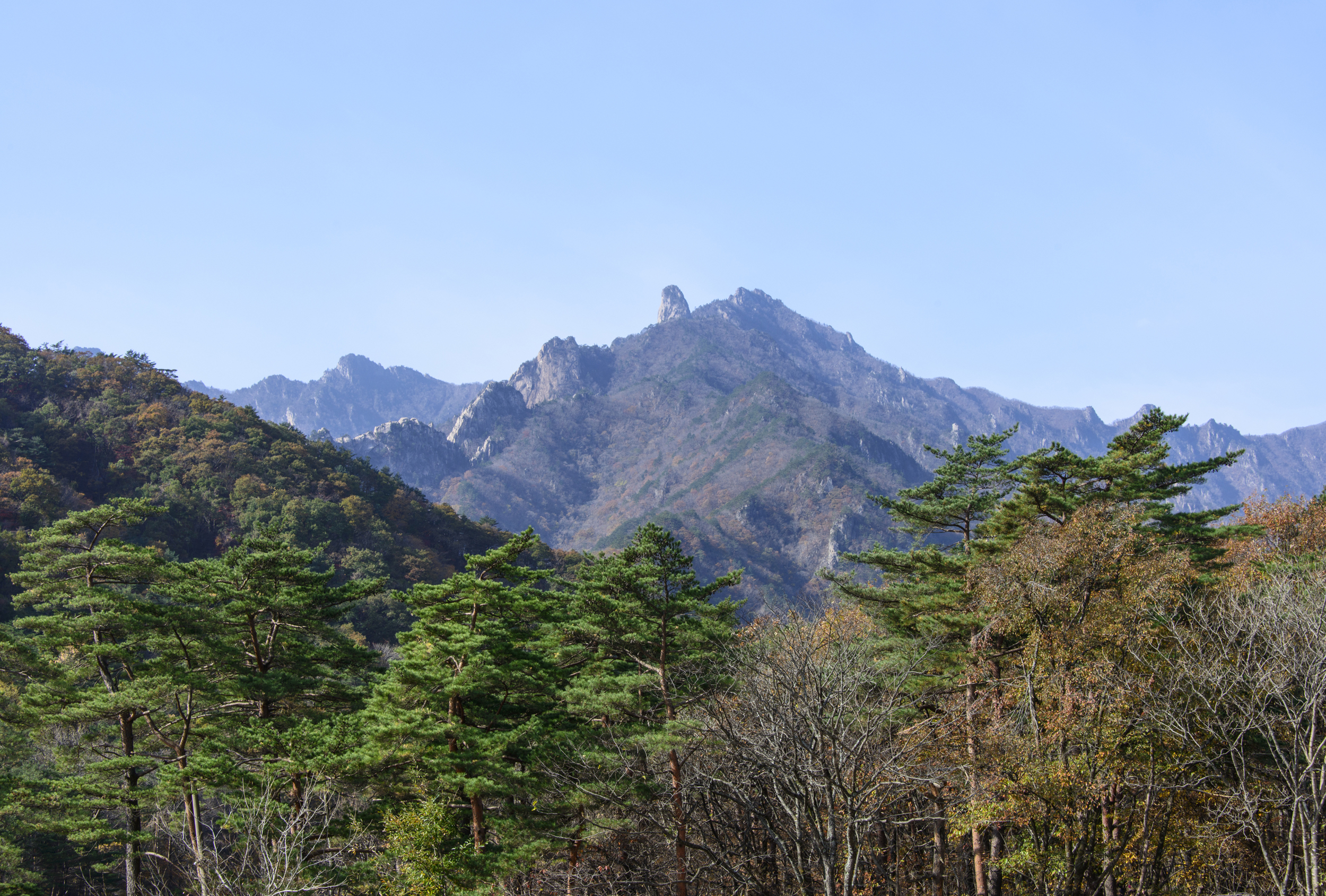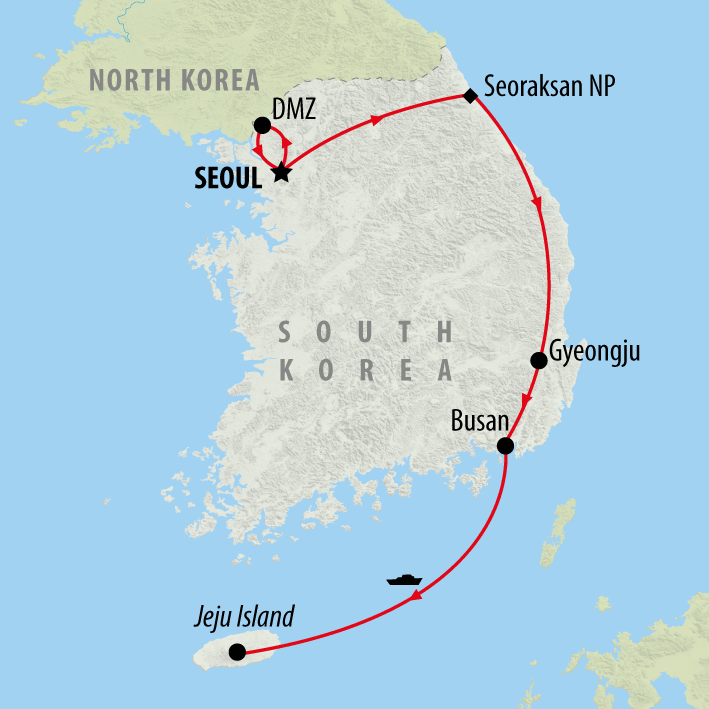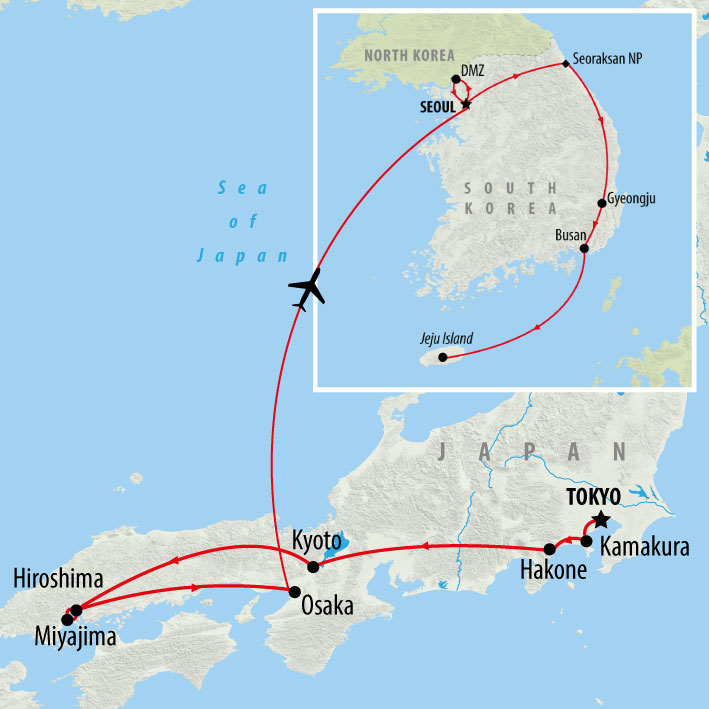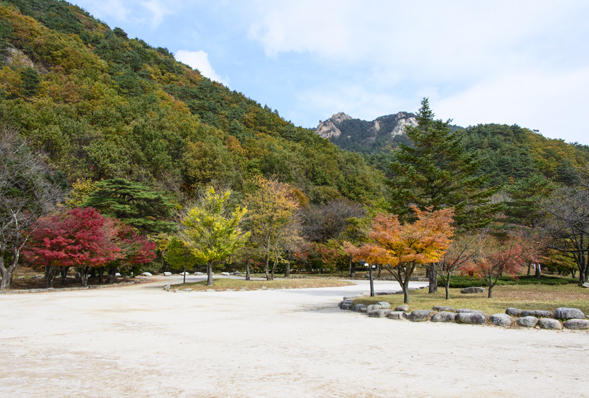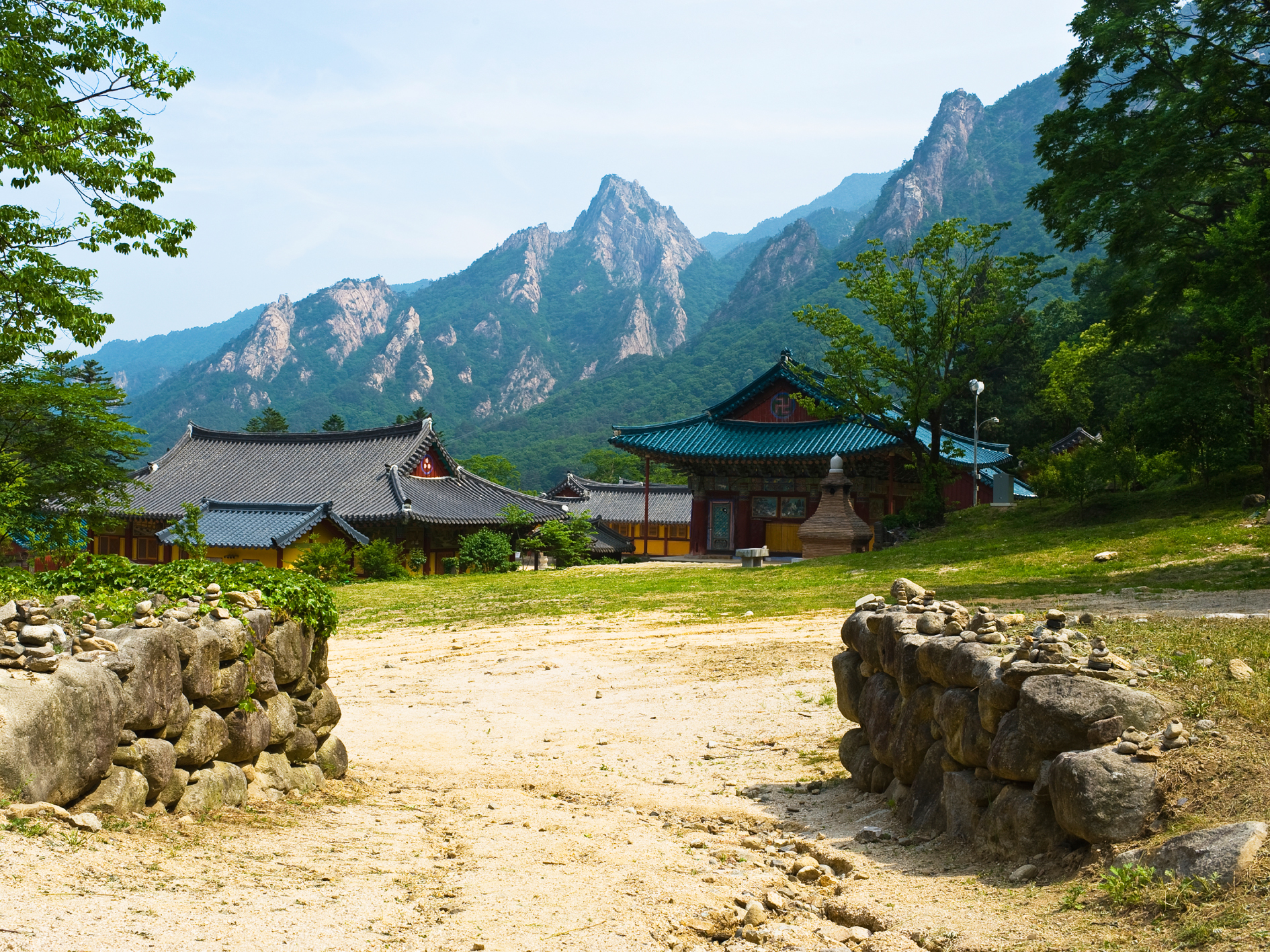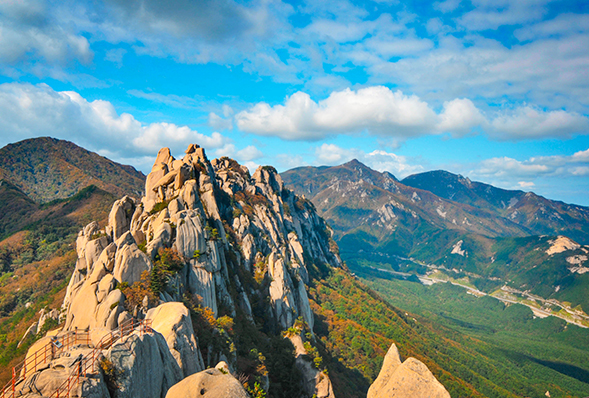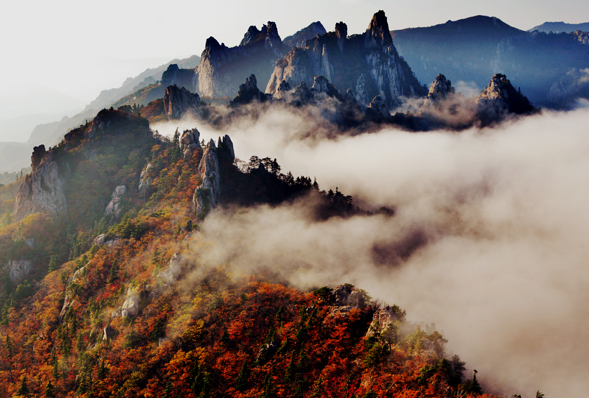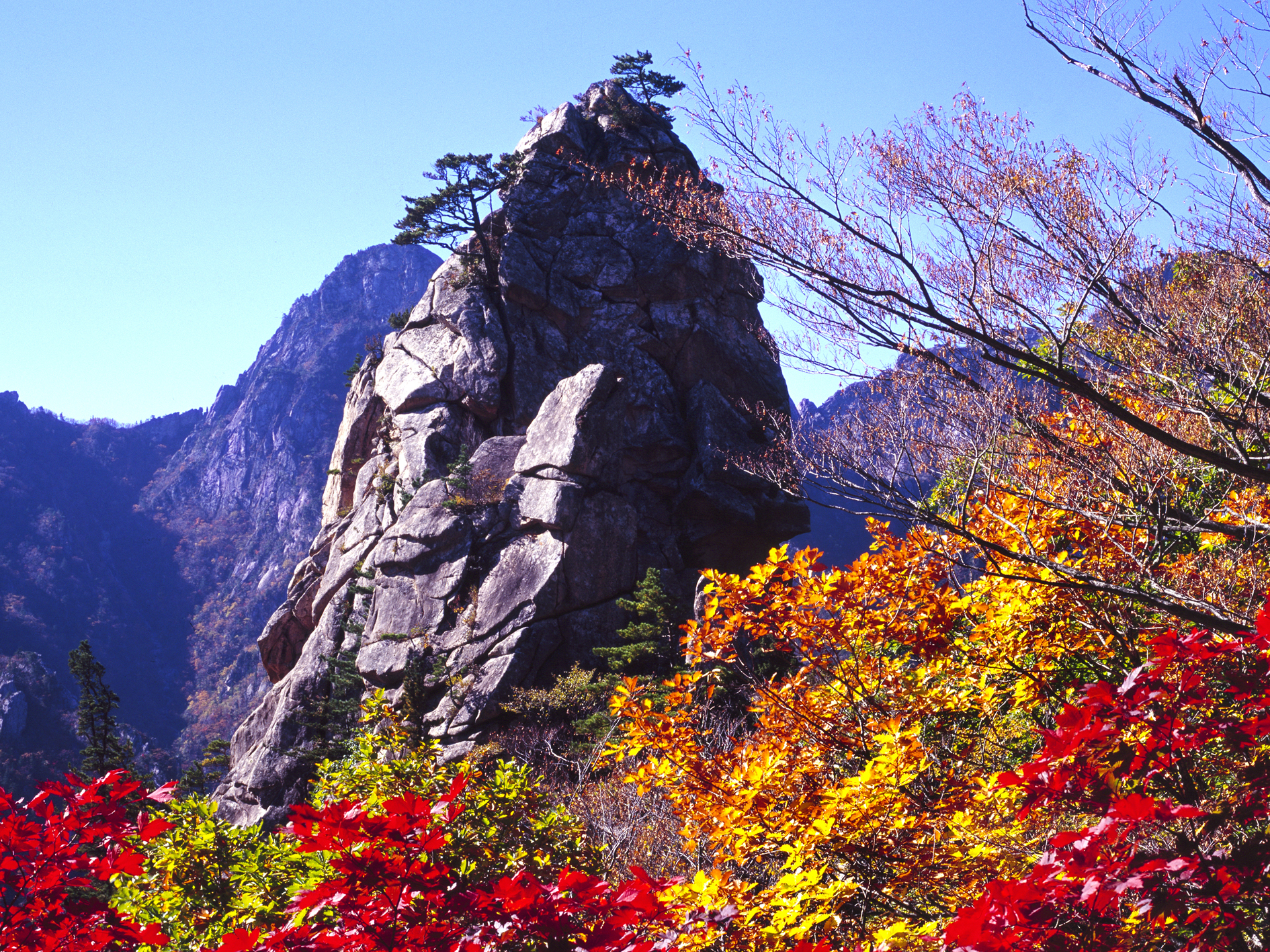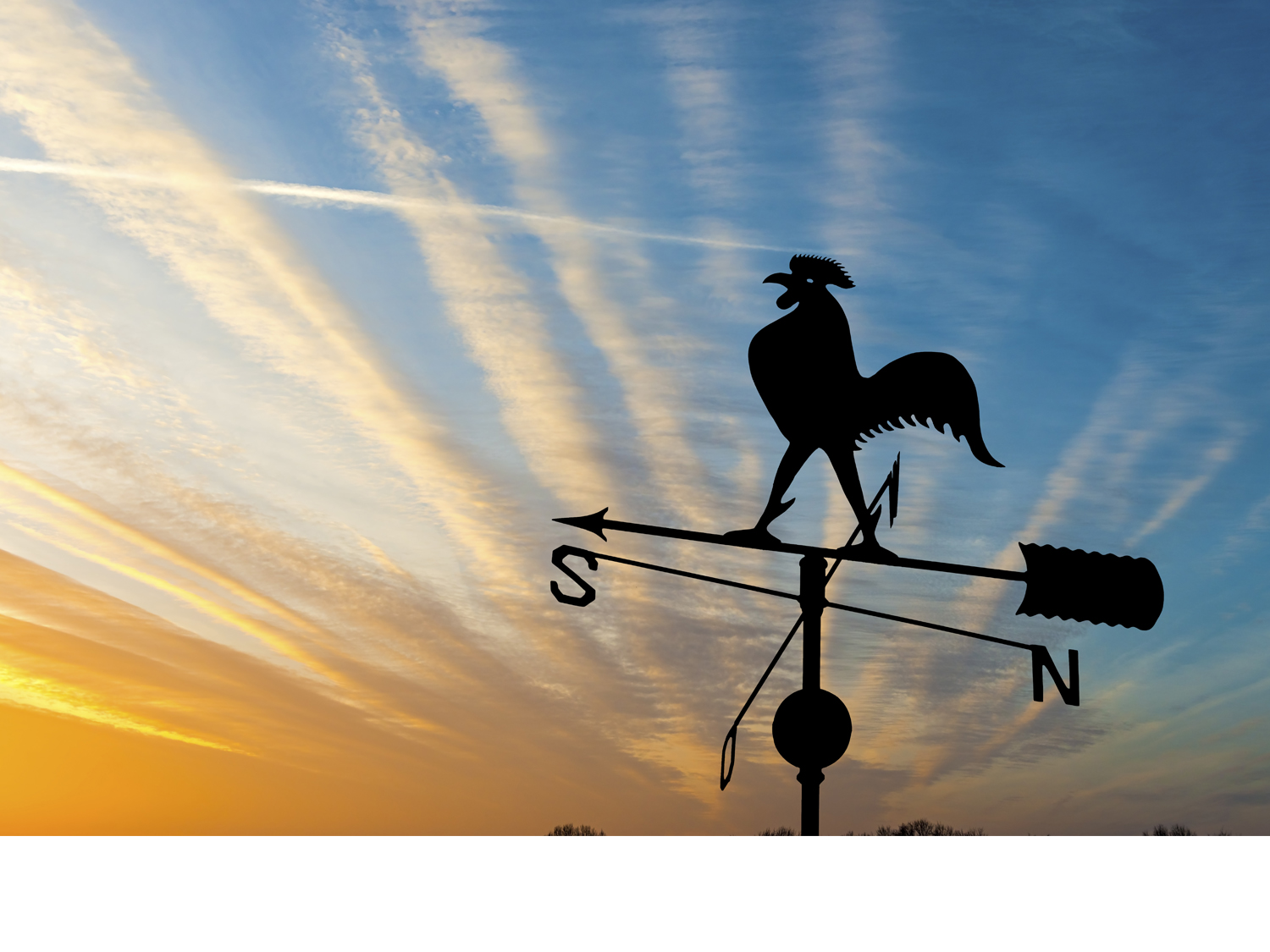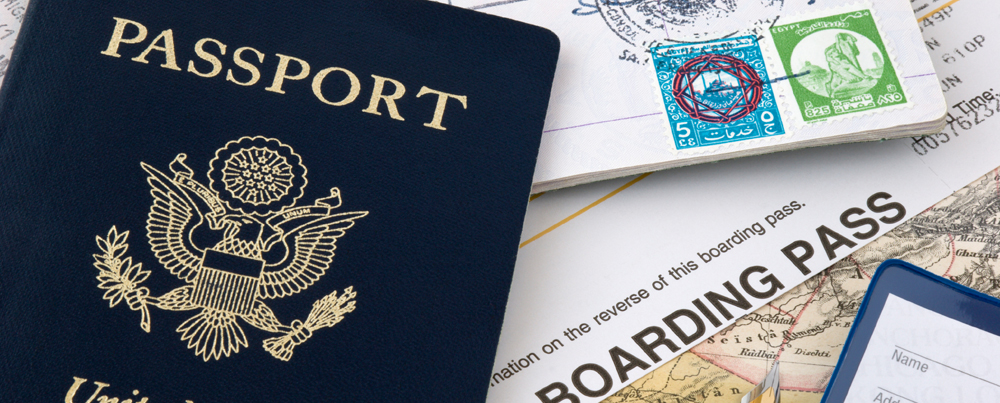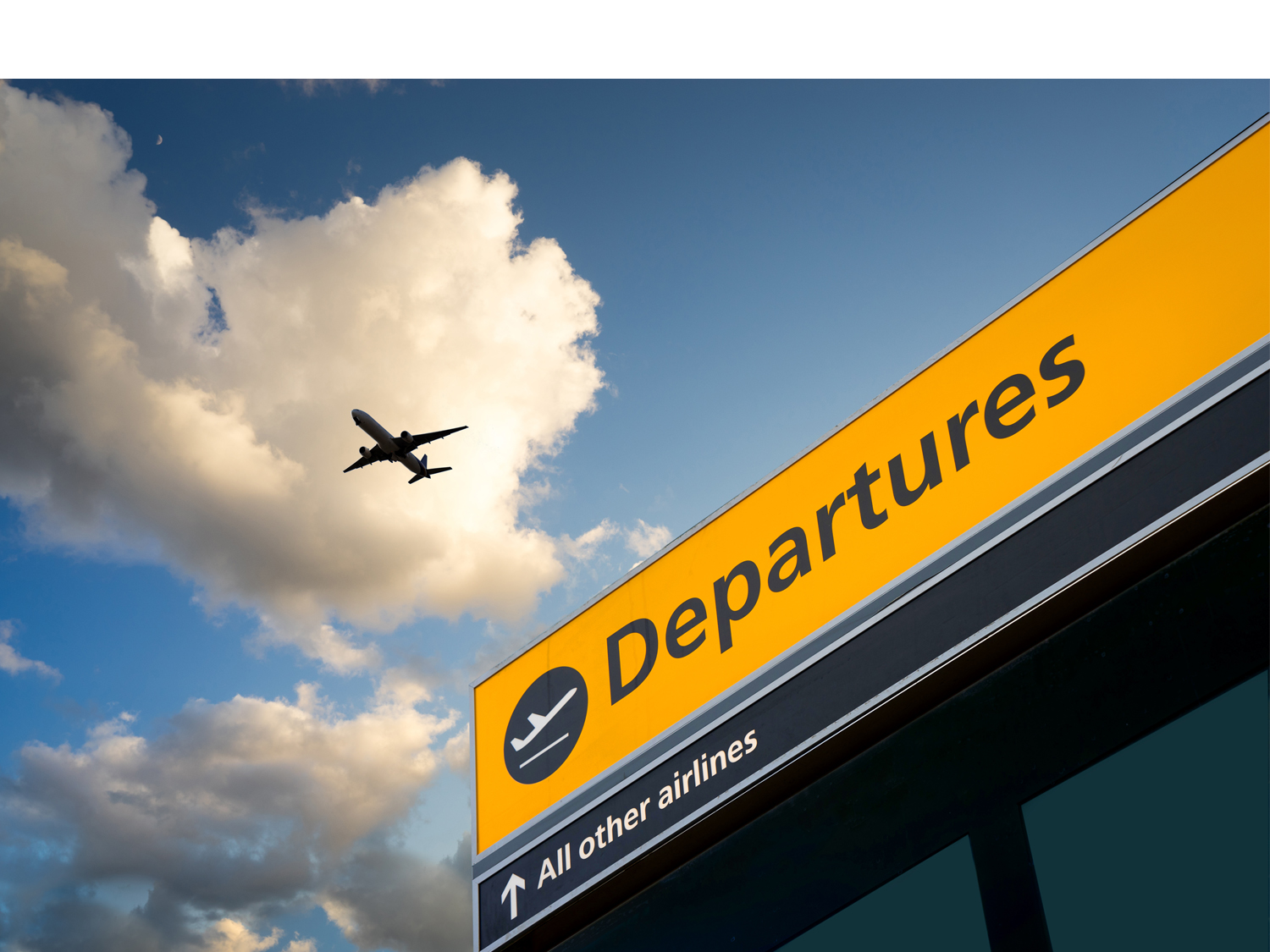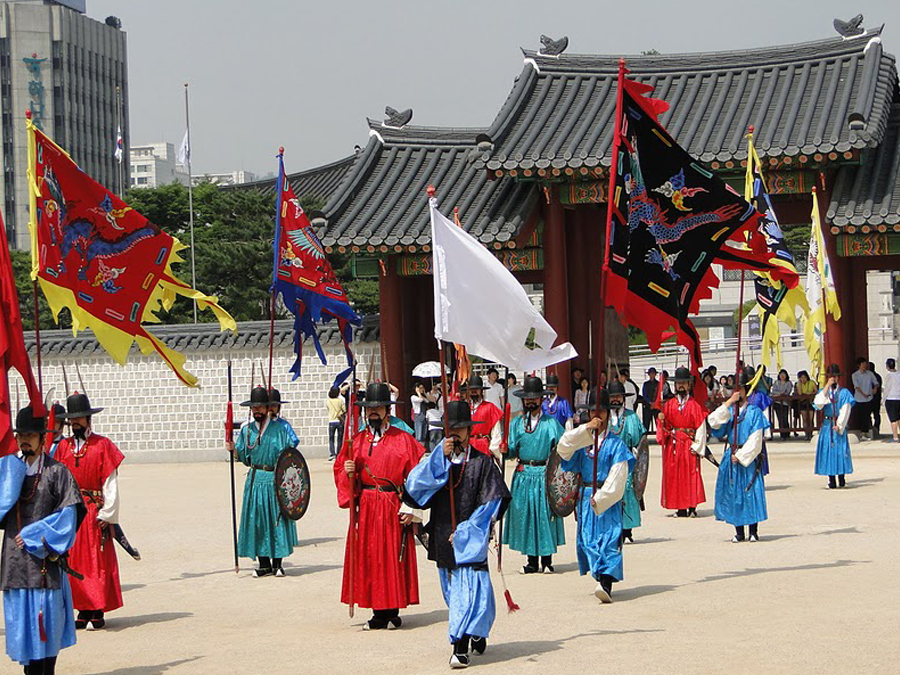Best guided tours to Mount Seoraksan National Park, South KoreaDiscover Breathtaking Scenery and Hidden Gems with Expert-Led Tours of Mount Seoraksan National Park
When do you want to go?
2024
I'm flexible
Passengers
Adults (18+)
Children (0 - 17)
Welcome to Mount Seoraksan National Park, South Korea
Mount Seoraksan National Park is one of Korea’s most famous national parks, renowned for its breath-taking beauty. Spread across four cities and counties, the peaks of the Seoraksan mountains pierce through the clouds while waters the colour of jade course their way through the valleys below. UNESCO designated that area a Biosphere Preservation District in 1982 due to the many rare species found here. The park is a year-round destination, though it is particularly popular in the autumn, when rich reds and yellows paint the landscape of the forest.
The highest peak of the Seoraksan Mountain range is the Daecheongbong Peak. Standing at 1,708 meters tall, the peak affords magnificent views of the mountain range and valleys and is a spectacular place to witness sunrise. The mountain range of Seoraksan is the backbone of the Korean peninsula. The primary valley of the Seoraksan in ‘The Valley of a Thousand Buddhas’, so named due to the rock formations that line its sides and resemble a line-up of Buddha statues.
As well as valleys and mountain peaks, the national parks also offer a number of stunning waterfalls and enticing caves. It provides several picturesque trails for interested visitors and hikers and is a great place to spend a few days exploring. Photographers and nature lovers alike are sure to be blown away by the sheer beauty of their surroundings and might even get a chance to observe some of the wildlife that dwells within the park. Animals that are commonly spotted include otters, Asian black bears, and Korean musk deer.
Guided Tours to Mount Seoraksan National Park
Guided tours to Mount Seoraksan Nationa Park offer an enriching way to explore this natural and cultural treasure in South Korea. These tours cater to various interests, including hiking, cultural exploration, and wildlife viewing. They range from challenging hikes to Daechongbong Peak to serene visits to ancient temples like Sinheungsa and Baekdamsa. Benefits of guided tours include expert knowledge, convenience, safety, environmental education, and language support, making the experience more insightful and enjoyable. Reputable operators like Trazy, Klook, and Seoul Hiking Group offer diverse packages, ensuring a well-rounded and memorable visit. Booking in advance is recommended, and participants should prepare with appropriate gear and necessities.
What to expect – Why visit Mount Seoraksan National Park?
Natural Beauty and Landscape
Seoraksan means ‘Snowy Crag Mountains’, and the National Park is named after the most famous mountain in the area. The park is characterized by jagged peaks, deep valleys, clear streams, and dense forests. In autumn, the park transforms into a vibrant mosaic of red, orange, and yellow foliage, attracting numerous visitors. The spring season is equally captivating, with cherry blossoms and azaleas in full bloom. The park is also home to several waterfalls, including Biryong, Yukdam, and Towangseong Falls, each adding to the park’s scenic splendor.
Flora and Fauna
The park boasts rich biodiversity, hosting over 1,400 species of plants and 2,000 species of animals. It is particularly known for its ancient yew trees, Korean red pines, and unique alpine flora. Wildlife enthusiasts can spot various animals, such as the long-tailed goral, musk deer, and the endangered Korean serow. Additionally, the park provides a habitat for rare bird species, including the black woodpecker and Tristram’s woodpecker.
Cultural and Historical Significance
Seoraksan National Park is also a site of cultural and historical importance. Within its boundaries lies the Sinheungsa Temple, a Zen Buddhist temple believed to have been founded in the 7th century during the Silla Dynasty. The temple complex features a giant bronze Buddha statue and is a popular pilgrimage and tourist site. Another notable temple is Baekdamsa, nestled deeper in the mountains, offering a serene retreat for visitors.
Hiking and Outdoor Activities
The park is a haven for outdoor enthusiasts, offering a wide range of activities such as hiking, rock climbing, and camping. Seoraksan’s hiking trails cater to all levels, from easy walks to challenging climbs. The hike to Daecheongbong Peak is a favourite among experienced hikers, providing panoramic views of the park and beyond. For those seeking less strenuous activities, the Gwongeumseong Fortress, accessible via a cable car, offers spectacular views without the need for an arduous hike.
Popular Sites to See in Mount Seoraksan National Park
Daecheongbong Peak
As the highest peak in Seoraksan, Daecheongbong stands at 1,708 metres and offers breathtaking panoramic views. The challenging hike to the summit is popular among experienced hikers.
Ulsanbawi Rock
Ulsanbawi is a unique rock formation with six granite peaks. The hike to Ulsanbawi involves climbing steep stairs, but the effort is rewarded with spectacular views of the park.
Biseondae Rock
Biseondae is a large rock platform located alongside a clear stream. It is an ideal spot for relaxing and enjoying the surrounding natural scenery, including the beautiful Biryong Falls nearby.
Frequently asked questions
How do I get to Mount Seoraksan National Park?
The park is accessible by bus or car from major cities, like Seoul. From Seoul, you can take an intercity bus to Sokcho, the nearest city to the park. From Sokcho, local buses or taxis can take you to the park’s entrance.
When is the best time to visit Mount Seoraksan?
The best times to visit are during autumn (October to November), when the foliage is stunning, and spring (April to May), when flowers are in bloom. Summer offers lush greenery, while winter provides a beautiful, snowy landscape.
Do I need to pay an entrance fee?
Yes, there is a small entrance fee for adults and children. Prices may vary, so check the latest information on the park’s official website or at the entrance.
What should I wear and bring?
Wear comfortable hiking shoes, weather-appropriate clothing, and bring essentials like water, snacks, a map, and a first-aid kit. In winter, dress warmly, and in summer, bring sun protection.
How long does it take to hike to Daecheongbong Peak?
The hike to Daecheongbong Peak typically takes about 10–12 hours round-trip. It is a strenuous hike, so ensure you are physically prepared and start early in the morning.
Is the park accessible for people with disabilities?
Some areas of the park, such as the cable car to Gwongeumseong Fortress, are accessible for people with disabilities. However, many hiking trails are rugged and may not be suitable.
What wildlife might I encounter?
The park is home to various wildlife, including the Korean serow, musk deer, and a range of bird species. While wildlife sightings can be exciting, always keep a safe distance and do not feed the animals.
What safety precautions should I take?
Always stay on marked trails, be prepared for changing weather conditions, and let someone know your plans. If hiking alone, ensure you have a charged phone and emergency contacts.
South Korea travel guides
Our customers say
Excellent
4.4 out of 5 based on 275 reviews
